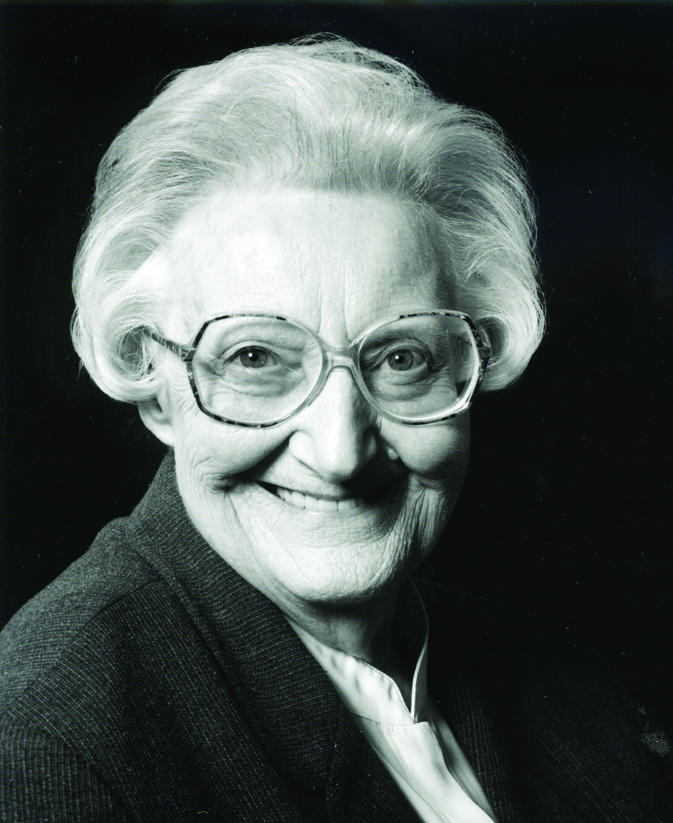Short abstract
Founder of the modern hospice movement
Cicely Saunders founded the first modern hospice and, more than anybody else, was responsible for establishing the discipline and the culture of palliative care. She introduced effective pain management and insisted that dying people needed dignity, compassion, and respect, as well as rigorous scientific methodology in the testing of treatments.
St Christopher's Hospice opened in south west London in 1967. It is now one of many but is still the leader in the field. It was her personal achievement and has been imitated all over the world. She raised the funds for the hospice and contributed some of her own money.
Saunders introduced the idea of “total pain,” which included the physical, emotional, social, and spiritual dimensions of distress. A good listener, she paid systematic attention to patient narratives. One St Christopher's patient, transferred from another hospital, said, “They used to see how long I could go without an injection. I used to be pouring with sweat because of the pain. I couldn't speak to anyone and I was having crying fits. I think I've only cried once since I've been here... The biggest difference is feeling so calm. I don't get worked up or upset.”
Cicely Mary Strode Saunders was born in Barnet, Hertfordshire, in 1918. She was sent to Roedean School when she was 10. Taller than the other girls, she felt she never fitted in, which, she said, gave her a feeling for people who were outsiders. She also suffered from a painful and slightly crooked spine, and was made to lie flat on the floor for 40 minutes a day.
Her father disapproved of her desire to be a nurse, and so instead she went to study at Oxford. After the outbreak of the second world war she abandoned her course and defied her parents' advice, enrolling as a student nurse at St Thomas' Hospital in 1944. However, her back was still painful, and she was advised to quit nursing. After returning to Oxford for a year she gained a “war degree” and qualified as a social worker, or what was then called a lady almoner, in 1947.
Saunders was originally an agnostic, but, while on holiday in Cornwall with some Christian friends, she discovered she believed in God. It was, she said, “as if a switch had flipped.”
Figure 1.

A year later, during her work as an almoner, at Archway Hospital, she cared for a dying 40 year old Polish Jewish émigré called David Tasma. In a brief and intense relationship—which probably amounted to a spiritual love affair—they discussed the idea that she might found a home for dying people to find peace in their final days. He left her £500, then a substantial sum, and the prophecy “I'll be a window in your home.” There is now a window dedicated to him at St Christopher's.
David Tasma's death coincided with the death of Cicely Saunders' father and that of a close friend, and she fell into a state of “pathological grief.” She felt that, at last, she knew what God had called her to do, which was to build a home for dying people, where scientific knowledge should be combined with care and love.
Saunders was advised by a surgeon that people wouldn't listen to her as a nurse, that doctors desert the dying, and that she could best help dying patients by becoming a doctor. She was accepted as a medical student at St Thomas' Hospital aged 33.
After qualifying, she obtained a research scholarship at St Mary's Hospital, Paddington, where she studied pain management in the incurably ill, and at the same time worked at St Joseph's, a hospice for the dying poor in Bayswater, run by nuns. Here she used her medical expertise and research findings to help the nuns improve their standard of care.
In 1960, at St Joseph's, she met Antoni Michniewicz, the second of the three Polish men who influenced her life. Again, they had a close spiritual relationship.
At the same time she devoted herself to her cause and by late 1959 she had drawn up a 10 page proposal for a hospice. She initially wanted it to be a Church of England hospice, but several grant-giving organisations required her to make it open to people of all faiths, so she modified the plan. Building work started in 1965.
The hospice contained 54 inpatient beds. There were plans for those who needed respite care, and for a home care service. The first patient was admitted in 1967. The hospice soon extended its activities to research, and added a study centre. By 1970 the NHS contributed two-thirds of the running costs, and NHS doctors undertook part of their specialist training there.
In 1963, three years after the death of Antoni Michniewicz, Cicely Saunders met another Polish man, who was to become her husband, Marian Bohusz-Szyszko. He had a long-estranged wife in Poland, whom he supported, and he was a devout Catholic. Marian's wife died in 1975, and in 1980 he married Cicely; she was 61 and he was 79. He predeceased her. They both spent their last days at St Christopher's.
Cicely Mary Strode Saunders, medical director St Christopher's Hospice 1967-85 (b Barnet, Hertfordshire, 1918; q St Thomas' Hospital, London, 1957; OM, DBE, FRCP), died from breast cancer on 14 July 2005.


